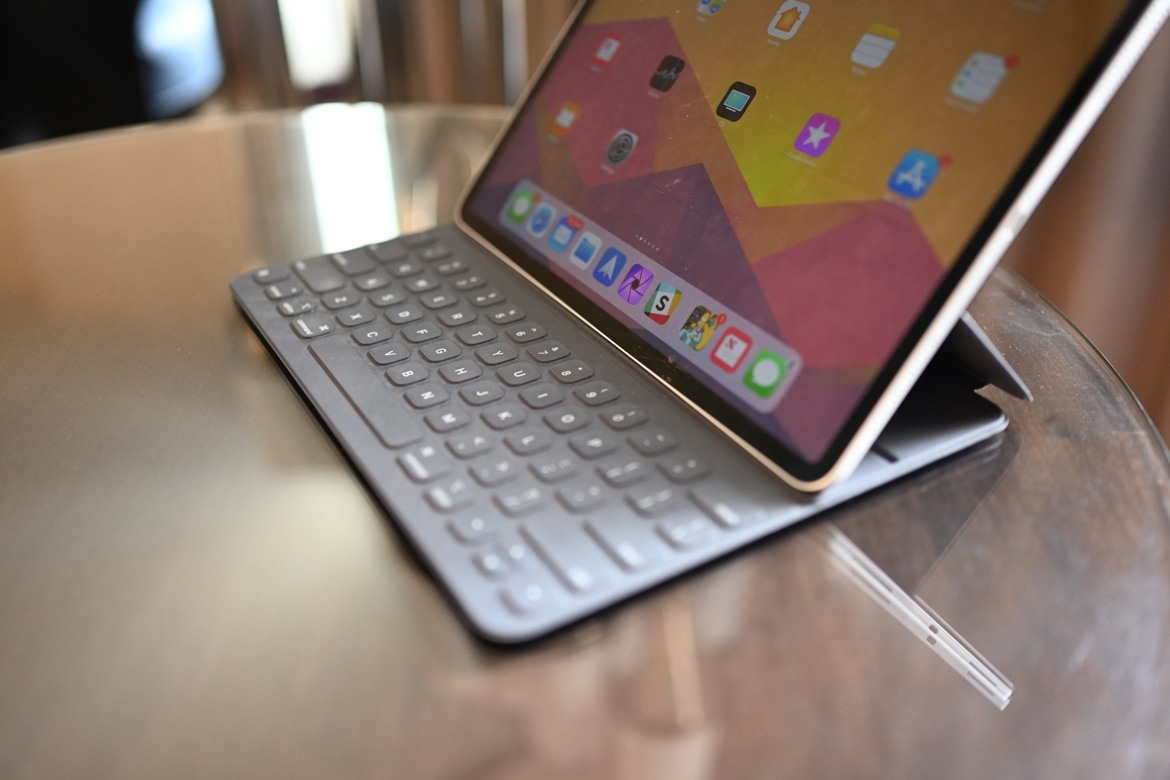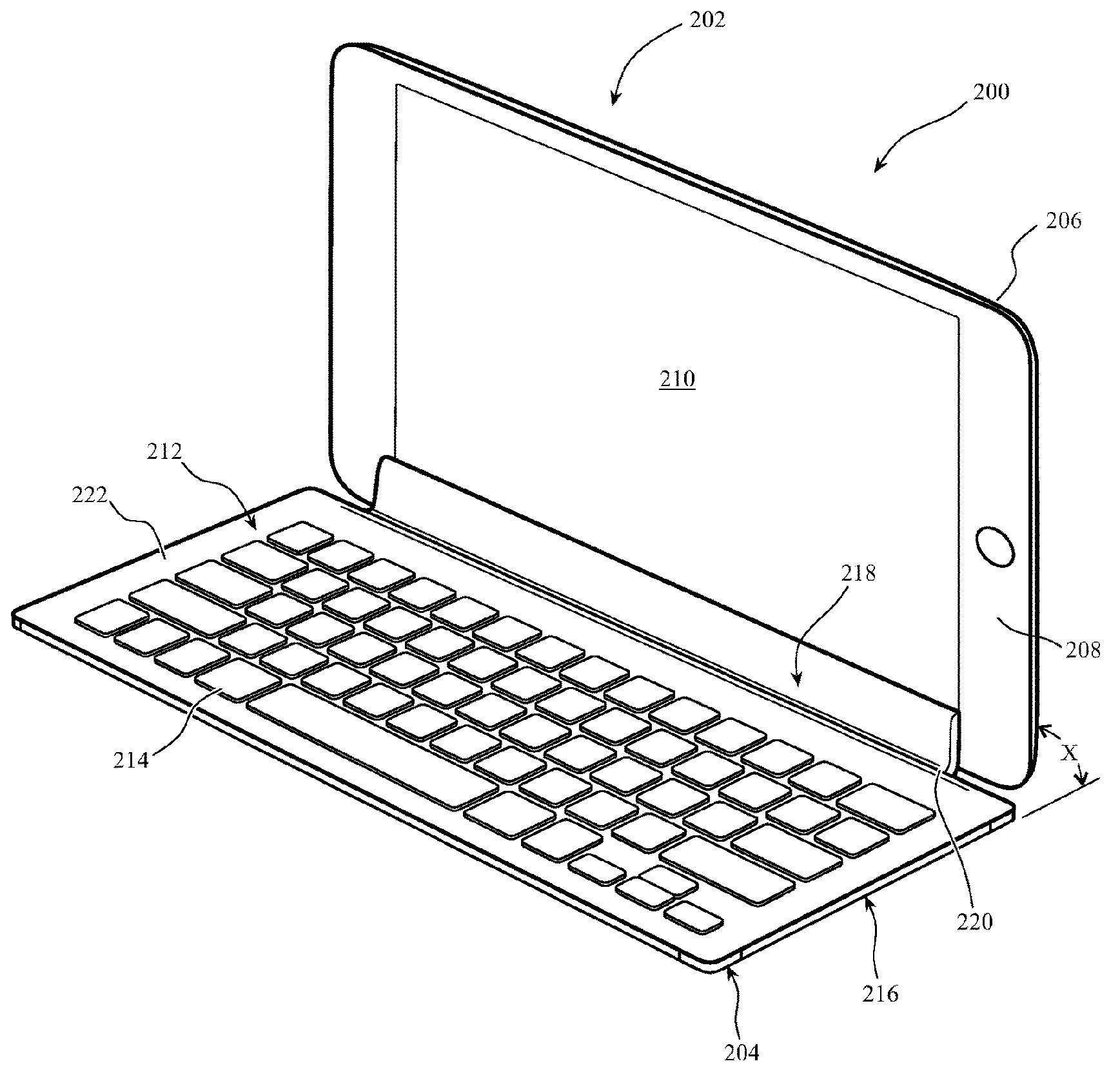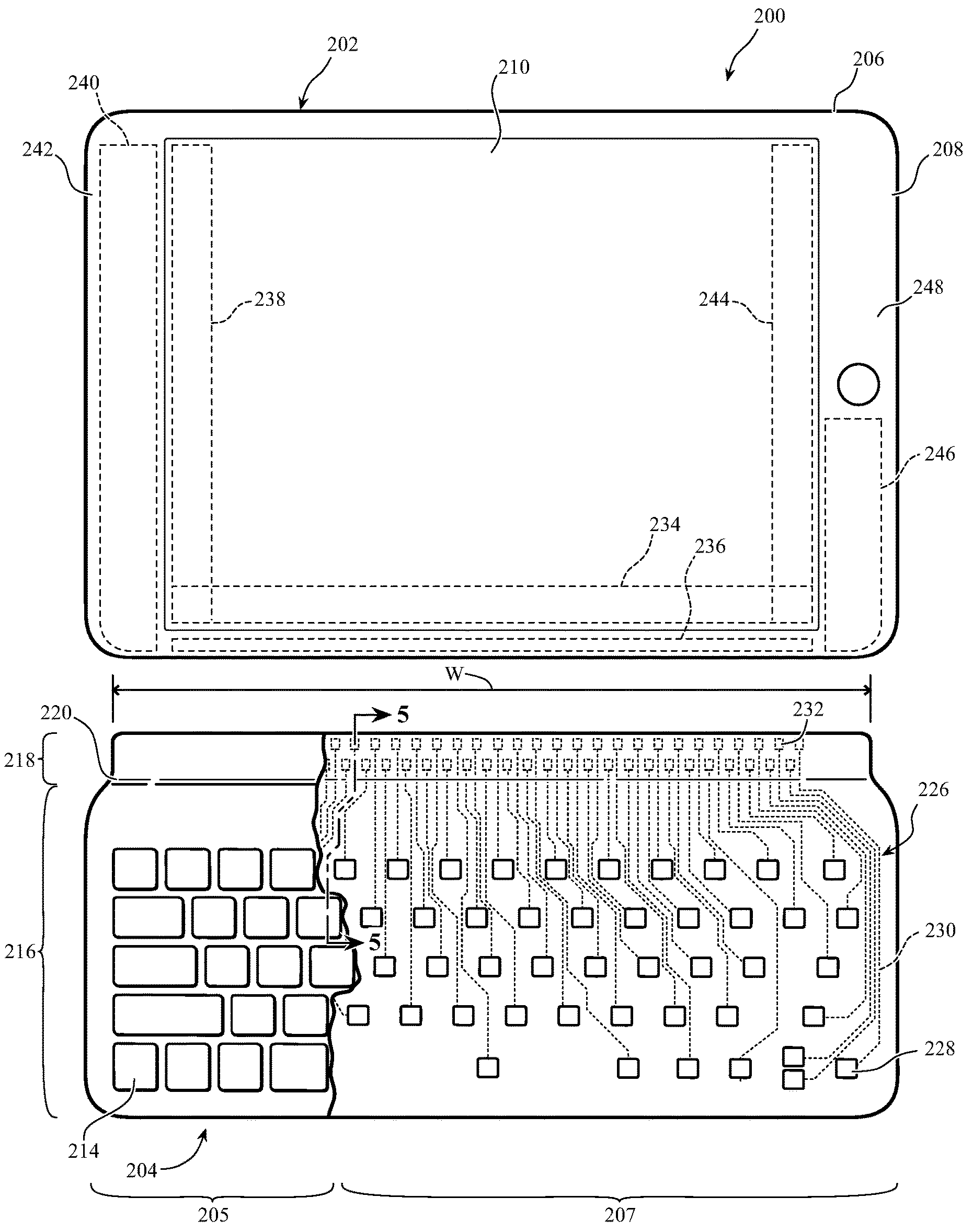
Apple is researching potential ways of using the iPad’s capacitive touchscreen for reading key presses from a future Smart Keyboard accessory that might not need to connect over Bluetooth or take advantage of the iPad’s Smart Connector at all.
Apple’s solution was proposed in a patent application titled “Remote Capacitive Interface,” published by the United Staes Patent and Trademark Office this morning. According to the invention, a future Smart Keyboard could ditch wireless Bluetooth connectivity and even Apple’s Smart Connector in favor of a physical connection through the display itself.

AppleInsider has the report:
Apple’s solution is to create an accessory that makes contact with the display as part of its holstering mechanism for an iPad. A proposal in the filing suggests a sliding clamp that gently brings the edge of the iPad display into proximity with contacts that gently touch the display.
Now, that seems like a pretty radical approach.
The contacts are all spaced out along the edge of the display, with each contact pair connected to a switch within the keyboard below each of the keys. When the key is pressed, the switch is actuated, enabling a connection to be made and for the contacts touching the display to change their electrical properties, and the capacitive load is detected by the device itself.
Tell me again, how exactly is this supposed to work?
As there is a pair of contacts for each key, arranged in a grid along the edge of the iPad display, the iPad can easily determine which key was typed by analyzing the position on the display edge where contacts are detected. In theory, a multitouch display would also be capable of detecting multiple simultaneous presses at the same time, such as the pressing of the shift key along with a letter or number.
The invention would theoretically enable the creation of a Smart Keyboard accessory that didn’t draw power from the iPad itself and didn’t use Bluetooth wireless connectivity.

Most importantly, it could work on any mobile device as long as it had a capacitive display, without needing any extra engineering, at least in theory. Be that as it may, I’m not sure I’d want the holstering mechanism touching my iPad display.
AppleInsider acknowledged and outlined potential issues with the idea:
As it affects capacitance, it is also feasible for the keyboard accessory to be attached and not affect the touchscreen’s behavior when not actively being used. While typing may interfere with the touchscreen’s general usage, it is unlikely for users to need to touch the display with a finger at the same time as typing.
Apple, as well as other companies, files patent applications related to all sorts of ideas, some of which are pretty wild, but the vast majority of the filings never see the light of day.
What do you make of this invention?
Let us know in the comments down below.